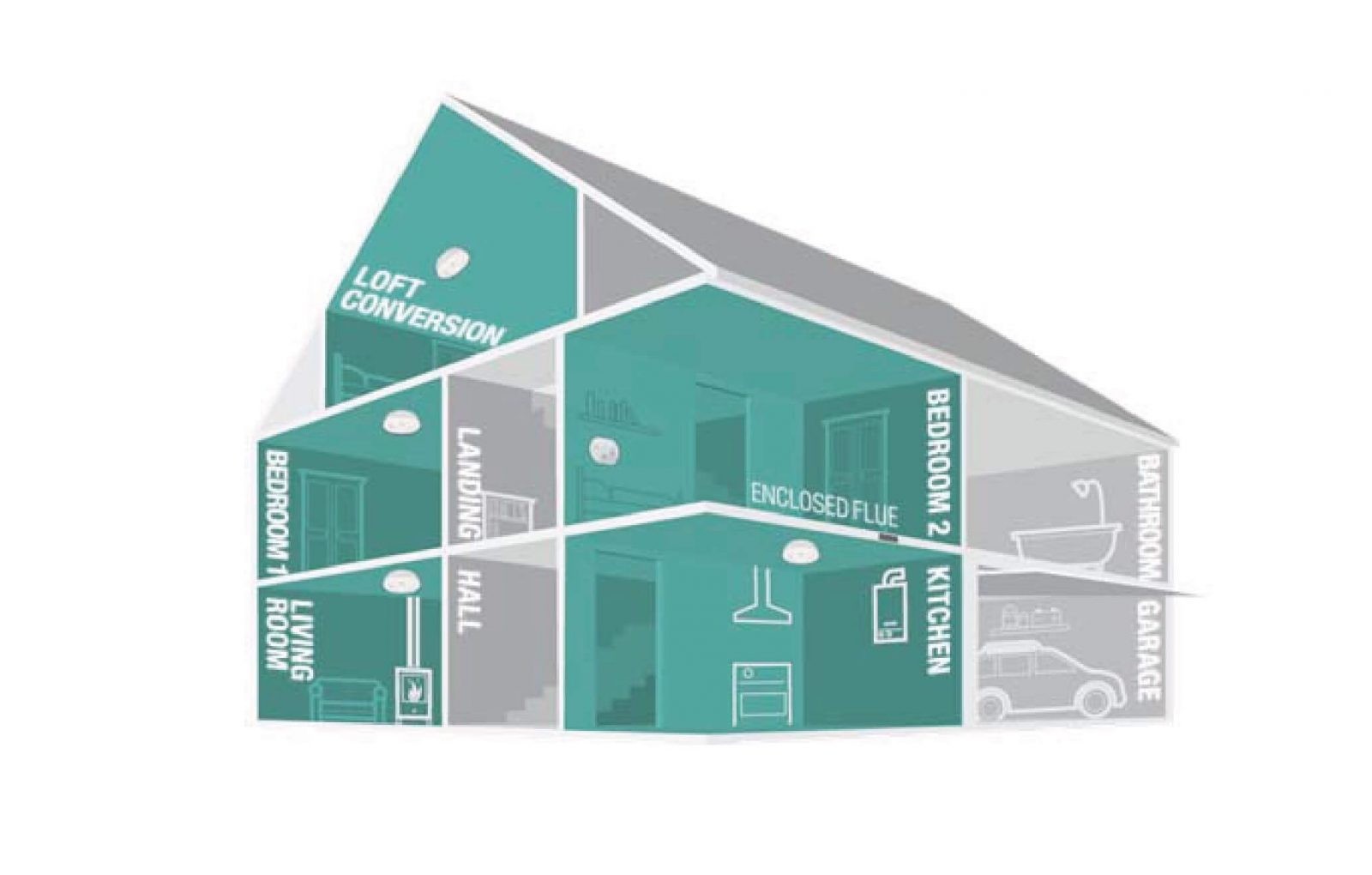
Where should CO alarms be installed?
The standard states that a Carbon Monoxide alarm should be fitted in:
- Rooms that have any fuel burning appliances – such as an open fire, gas cooker or boiler
- Rooms where people spend the most time – such as a living room
- Rooms where people sleep
- Any room that has a flue running through it
- Rooms which are not normally frequented that have a fuel burning appliance (for example a boiler room)
- Humid rooms with a fuel burning appliance (e.g the bathroom), the CO alarm should be suitable for bathrooms as per manufacturers guidance.
CO can also be produced by appliances burning:
- Ethanol
- Wood pellets
This means that a Carbon Monoxide leak can be detected from all the potential sources and heard throughout the property.